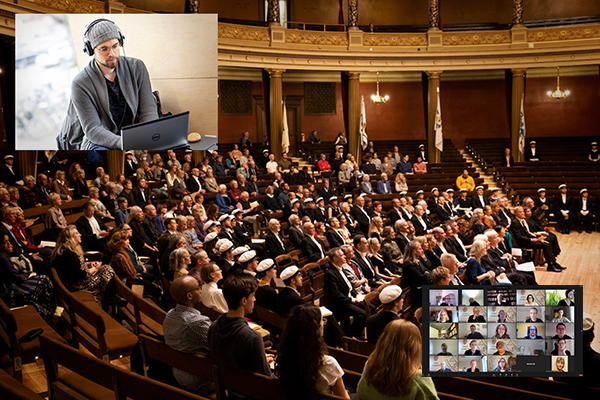During the pandemic, we have grown accustomed to virtual meetings, but once restrictions are lifted, there will obviously be reason to reflect on what form meetings should take. Should we meet in person? When might it be relevant to offer both virtual and in-person meetings? And when might virtual meetings be the best alternative?
“When should we hold meetings in person and when should they be held digitally? I think that now is the time to re-establish our relationships, clarify contexts, focus on our common mission and develop our ways of working,” says Carin Eriksson Lindvall, Head of the Unit for Career and Leadership in Academia and a researcher in the Department of Business Studies.
Interesting research report
There is still not a lot of research exploring how working remotely or on site affects our efficiency and productivity in the long term.
“To date, the research conducted to explore the effects of the pandemic on work has really been little more than taking the pulse of workplaces and job satisfaction in the short-term. But I spotted an article in the MIT Sloan Management Review that may be of interest to others. The authors write that when the task or meeting aims to generate energy, solicit feedback, foster a sense of community and purpose, or otherwise bring people together to solve problems, it’s best to hold such meetings in person. When it relates to basic coordination and sharing of information, virtual or digital meetings work best.”
Inspiration: 10 different ways to hold hybrid meetings
Staff in the Department of Peace and Conflict Research have drawn up a list of hybrid meeting forms. This list attracted widespread coverage in the Swedish media last autumn when restrictions began to ease somewhat and many employees returned to their workplaces.
The hybrid list describes ten examples of hybrid meetings that incorporate both in-person and digital participation. The list was originally compiled to inspire a reduction in air travel.
“The main point is to demonstrate that there is no need to stick rigidly to any given form of meeting,” said Professor Isak Svensson of the Department of Peace and Conflict Research to the Swedish Research Council’s Curie magazine in the autumn of 2021. “Many people have had experiences – often quite poor ones – of certain forms of hybrid meetings, and they think that this is the only way of doing things.”
Examples of hybrid meetings
- Paired workshop: Online workshop between two on-site groups
- Broadcast workshop: On-site conference with passive online participation in which online participants can listen passively but not actively engage
- Merged workshop: On-site conference with active online participation via screens where those online can participate in the discussion
- Connected workshop: Online speakers on on-site conference
- Fused workshop: Online panels of researchers as part of an on-site conference.
Course in meeting technique for hybrid meetings
Uppsala University also offers a course in meeting technique for hybrid meetings. There are ways to create good hybrid meetings that work well with participants present in a meeting room and via digital solutions, but it is important to take into account the limits of the technology if you want your hybrid meeting to be successful.
